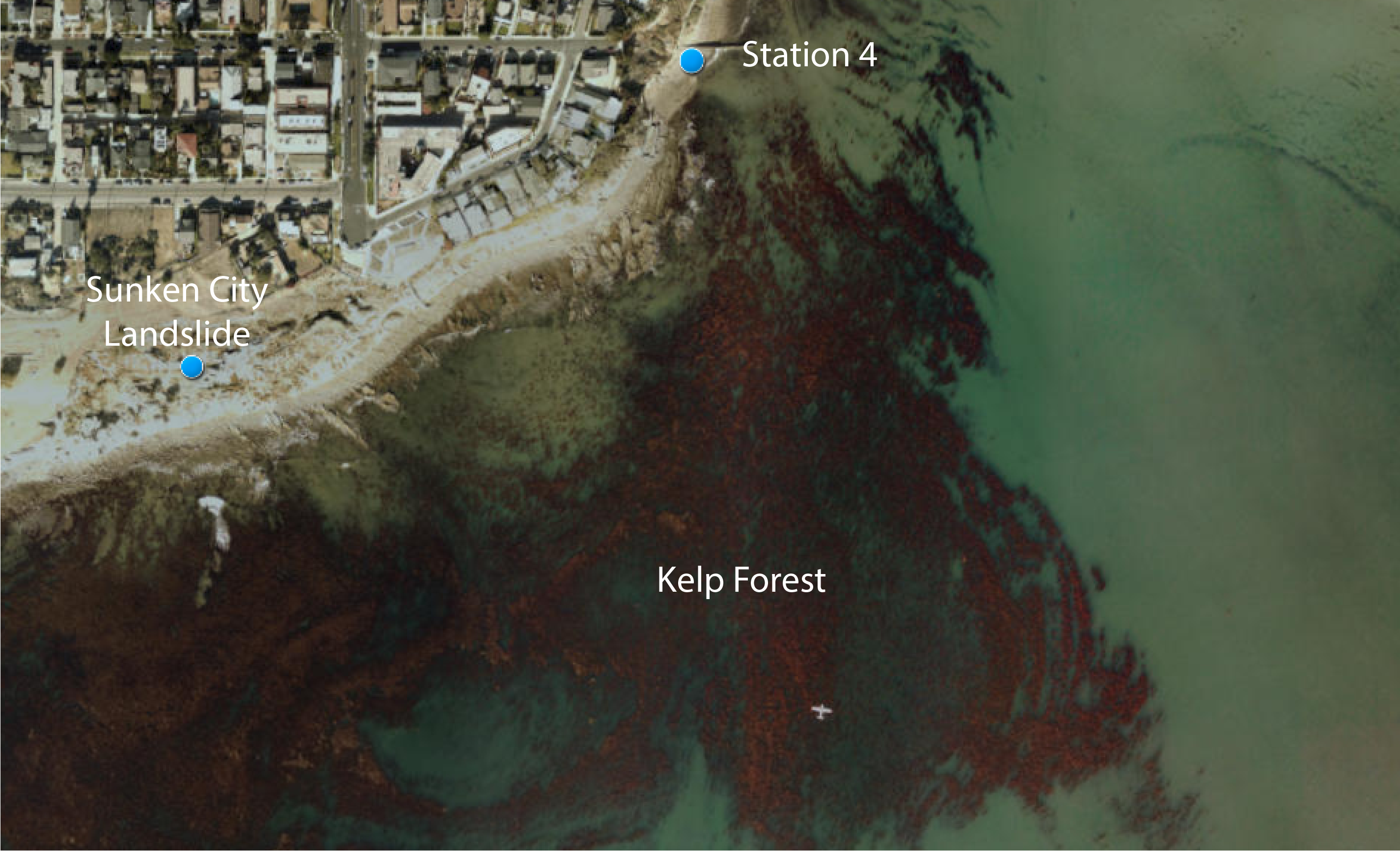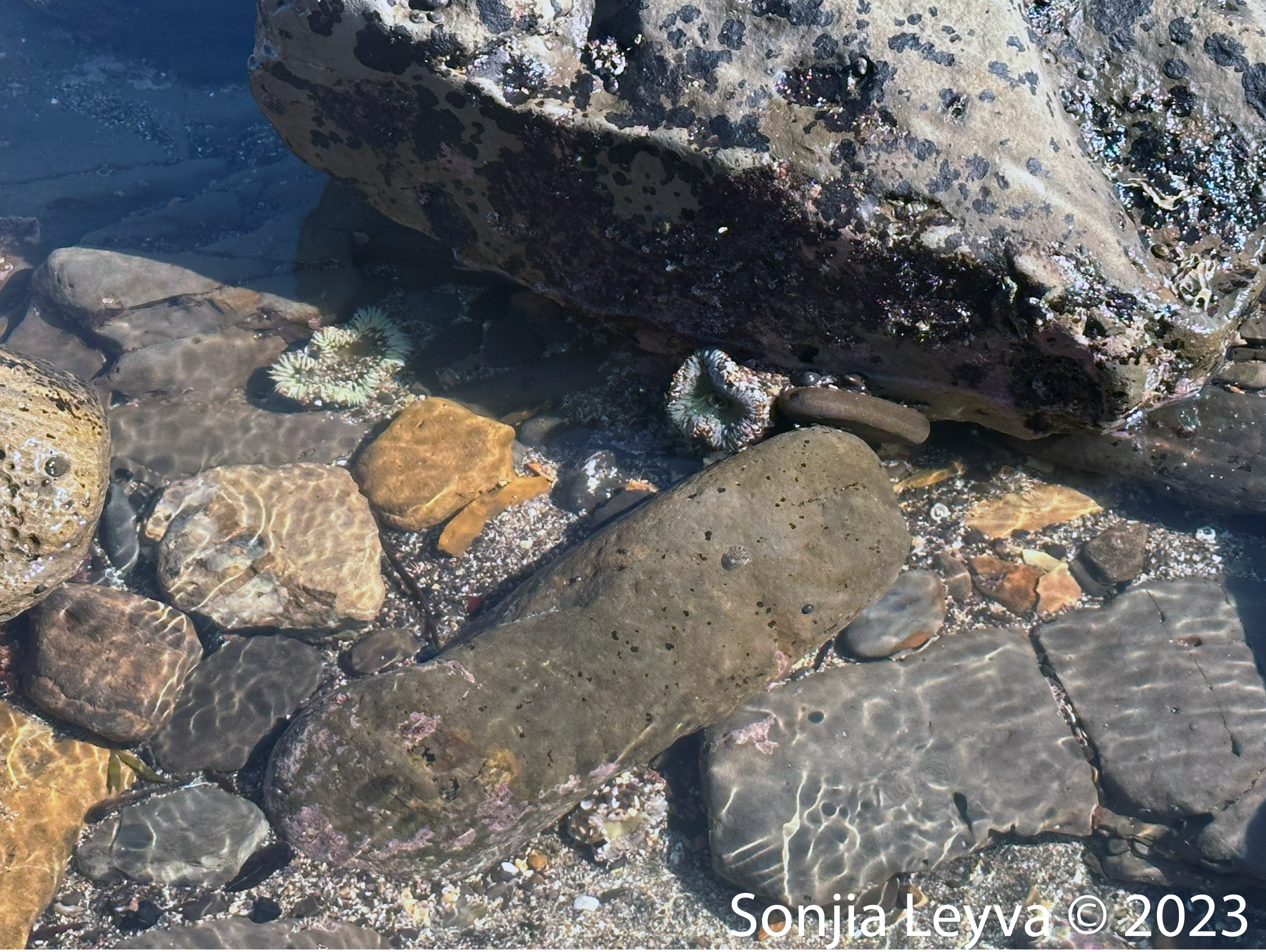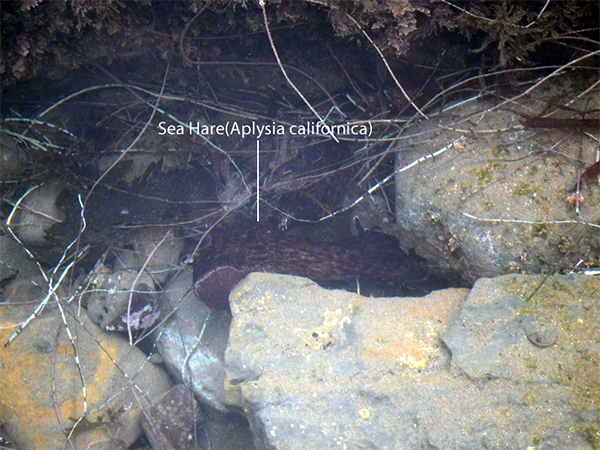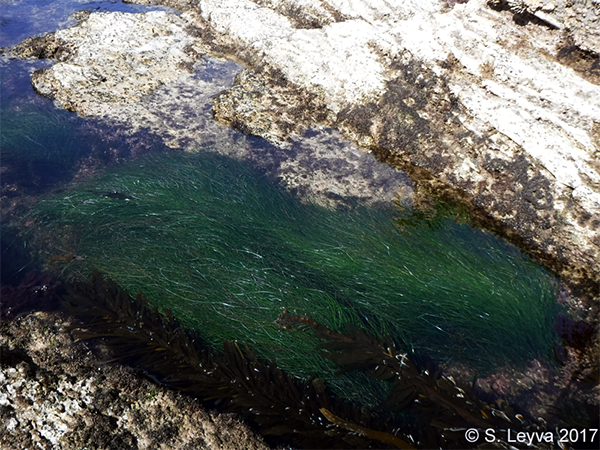
The wave-cut terrace that forms the tide pool areas.
|

The bedrock that forms the marine terrace/tide pools are a part of the Monterey Formation, Altamira Shale Upper Member, and include shales interbedded with limestones and siltstones.
|
 |
Close up of the thinly bedded phosphatic and diatomaceous shale. These rocks weather easily, enhancing cliff erosion.
|
 |
Solution weathering of limestones creates lots of pockets for tidepools to form.
|
 |
Siltstone boulder = about 1.5 m high) showing several angular unconformities = yellow lines). Angular unconformities form when bedding become tilted at some angle, then the surface is eroded; the beds = white lines) are now at an angle to the erosional surface. Mouse over image to see the interpreted image.
|
 |
| Sea grass on bedrock. If you look closely, you can see kelp in the waves. Just offshore from the tide pool area is a small kelp forest. |
| |
| Just offshore of the tide pools is a kelp forest. Kelp forests began to disappear from the Palos Verdes Peninsula coasline in the early 1900s, and were nearly gone by the 1930s. Numerous organisms depend upon the kelp forsests for food and protection. One study suggested that nearly the fish biomass was reduced by 63% with the removal of the kelp forests. Conservation efforts have brought back many of the forests in this area. Below is a satelite image of the Point Fermin area, with the kelp forests appearing as dark red stripes in the ocean. |
 |
Tide Pool Organisms |

Green sea anemone (Anthopleura xanthogrammica) |
|

Green sea anemone (Anthopleura xanthogrammica) |
|

Purple sea urchins in their burrows, circa 2011.
|
|

Brown cowrie |
|

Mussels like to congregate in cracks that form in the limestones.
|
|
 Mollusk with red kelp on shell (species unknown). Speaker for scale. Mollusk with red kelp on shell (species unknown). Speaker for scale. |
|
 Sea Hare (Aplysia californica) Sea Hare (Aplysia californica) |
|
 Sea Hare (Aplysia californica) Sea Hare (Aplysia californica) |
|

Sea Hare species unknown |
|

Sea Grass and Kelp
|






 Mollusk with red kelp on shell (species unknown). Speaker for scale.
Mollusk with red kelp on shell (species unknown). Speaker for scale. Sea Hare (Aplysia californica)
Sea Hare (Aplysia californica) Sea Hare (Aplysia californica)
Sea Hare (Aplysia californica)